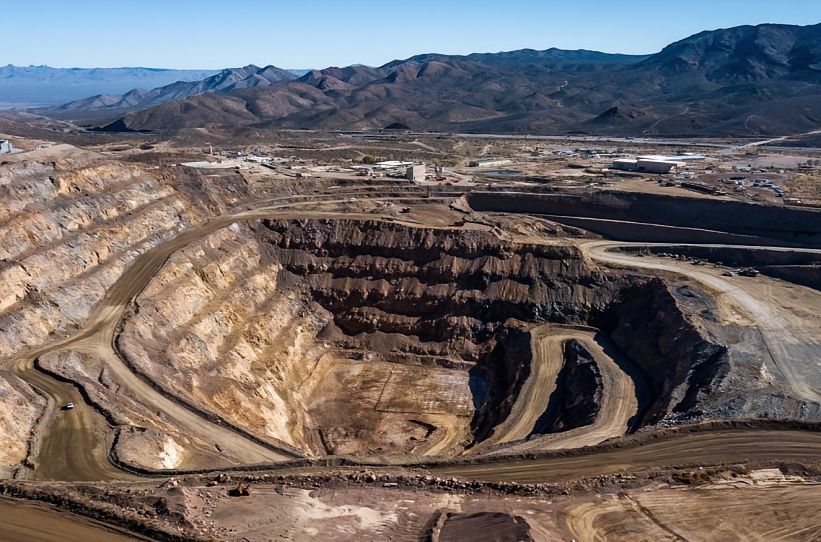
Rare earth, as a crucial strategic resource, is like a "behind the scenes hero" hidden behind the high-tech industry, profoundly influencing every aspect of modern industry. However, the United States, a technological and military powerhouse, has fallen into a deep dependence dilemma in the field of rare earths, and the reasons behind this are worth further analysis.
From the perspective of resource endowment, the United States is not a country lacking in rare earths. Its rare earth reserves are about 1.5 million tons, accounting for 1.25% of the global total reserves, tied for 7th place with Greenland, Denmark. Rare earth deposits have been discovered in 19 states. However, despite this, the rare earth production in the United States has long been unable to meet its own needs. Take the Pas Mountain mine in California, once the world's largest rare earth supplier, for example. After several changes of ownership in 1995, its production capacity declined significantly, and by 2017, only 8 employees were left working here. Although Pashan Materials Company later took over the operation and entered a revival stage, the long-term stagnation of rare earth mining in the United States has caused a serious industrial gap.
Environmental pressure is one of the important factors leading to the difficulties in rare earth mining in the United States. During the rare earth smelting process, radioactive waste such as thorium and uranium is generated, which poses extremely strict environmental regulations on rare earth mining in the United States. Taking the Mountain Pass mine as an example, it has been shut down multiple times due to environmental issues. Even if mining resumes, its smelting process has to rely on China for processing due to strict domestic environmental requirements. In contrast, China has rapidly taken a dominant position in the global rare earth mining and processing industry in the past, thanks to relatively relaxed environmental standards and lower costs.
In the midstream separation and processing stage of the rare earth industry chain, the shortcomings of the United States are more obvious. After the 1990s, the United States gradually withdrew from the field of separation processing and chose to have developing countries process rare earths on its behalf. Nowadays, the United States no longer has the ability to produce rare earth oxides, rare earth metals, and alloys on a commercial scale. The rare earth concentrates extracted by the American company Pashan Materials need to be transported across the ocean to China for smelting and separation, and then Chinese manufacturers produce rare earth oxides, metals, and alloys before selling them to American buyers. Although Australia's Linus Corporation has built the world's second largest rare earth production line, it can currently only provide light rare earth products. If the United States wants to obtain heavy rare earth products, it still cannot do without Chinese rare earth producers.
The United States also faces challenges in the downstream manufacturing and application links of the rare earth industry chain. Rare earth permanent magnet materials are the downstream products with the largest demand and consumption value in the global market, and the production capacity of the United States in this area has also significantly declined. Since 1995, the manufacturing department of rare earth permanent magnet materials in the United States has been reduced by half due to mergers, relocations, and closures, and there are currently no large-scale manufacturers of sintered neodymium iron boron magnets.
From a strategic perspective, the United States' deep dependence on rare earths poses many risks in international competition. In the military field, rare earths are crucial for the United States' defense research and military industry. Each F-35 multi-purpose fighter requires approximately 427 kilograms of rare earth elements, and each Virginia class nuclear submarine requires nearly 42000 tons of rare earth elements. The US Department of Defense report also stated that if China restricts rare earth exports, the US F-35 production line may be paralyzed within six months. In the technology industry, rare earths are also ubiquitous, from Tesla humanoid robots to EUV lithography machines. In the semiconductor field, gallium arsenide components are the core material of the F-35 radar, and China controls 98% of the world's refined gallium production capacity. The dependence of the US technology industry on Chinese rare earths has undoubtedly become its Achilles heel in global technological competition.
In order to break free from dependence, the United States has taken a series of measures in recent years. In terms of policy, the US government has issued numerous policy documents that are highly concerned about rare earth safety, adding rare earths to the list of key minerals and initiating relevant laws to enhance domestic rare earth production capacity. In terms of action, the United States has strengthened cooperation with its allies, such as the United States, Japan, India, and Australia announcing the launch of the "Four Party Key Mineral Initiative" within the framework of the "Four Party Security Dialogue", attempting to integrate the resources and technologies of the four countries and reduce dependence on China's rare earth supply chain; On the other hand, actively promoting the reconstruction of the local rare earth industry chain and encouraging local mining and processing of rare earths.
The deep dependence of the United States on rare earths is the result of multiple factors working together, from the development difficulties of the industry itself to the passive situation at the strategic level, all reflecting the awkward position of the United States in the global rare earth industry chain. The United States' efforts to break free from this dependence will continue to affect the global rare earth industry landscape and international political and economic relations in the future.

The 7th EU-African Union Summit was held in Angola from November 24th to 25th.
The 7th EU-African Union Summit was held in Angola from Nov…
On November 26, 2025, in the biting cold of Washington, D.C…
In the midst of a global wave of technological advancement,…
In November 2025, the revelations by Reuters and Bloomberg …
The Dominican Republic recently announced that it will allo…
On November 26, 2025, the European Central Bank (ECB) relea…